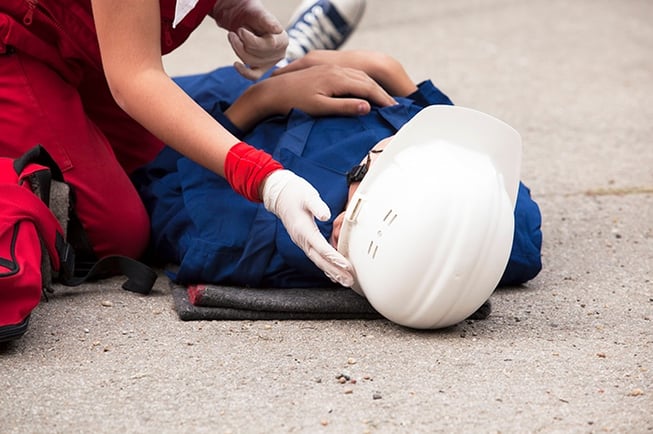
Managers who are in charge of health and safety need to take great care throughout the year. This is not just due to the annual audits by the HSE and other official bodies, but also because any injuries or accidents at work can make employers liable to pay large amounts of compensation. This article draws on a recent news story that illustrates just how huge these payouts can be in order to emphasise the importance of good health and safety practice at all times.
The need to think of lone workers
This article has a particular focus on lone workers, due to the fact that hazards at work can become particularly severe with reference to lone workers. This is because the conditions of lone working can make it hard for workers to get immediate medical assistance for any injuries. In addition, lone workers do not have colleagues around them to watch out for them and warn them of any impending hazards, or take action for them to save them from danger (for instance by physically steadying a ladder that is slipping).
The case of Crystal Pigment UK Ltd
The Crystal Pigment UK Ltd factory in Grimsby has been the subject of a recent compensation case. The company had to pay out £3 million in compensation to an employee when he was showered with a corrosive liquid caused by a burst tank of Titanium Tetrachloride. The tank ruptured when the Titanium Tetrachloride came into contact with water, something that should not have been allowed to happen. As well as rupturing the tank and exposing the employee in question (Paul Doyley) to highly corrosive chemicals, the resulting chemical reaction released a toxic vapour that left Doyley and two colleagues who came to rescue him with severe lung damage.
The HSE found that Crystal Pigment UK Ltd had not implemented the safety procedures that are necessary for dealing with toxic chemicals. In addition, there was a further incident involving the same chemical at the same company a year later, in 2011. As a result, in 2011, the HSE prosecuted Crystal Pigment UK Ltd under the the Health and Safety at Work Act 1974 and the Control of Major Accident Hazards Regulations 1999. In addition to the £3 million compensation money already mentioned, the company was ordered to pay over £37, 000 in court costs. Though the accident in question occurred back in 2010, the case was only settled a few months ago, in November 2016.
What if a lone worker had been involved?
This incident was, as it stands, a horrific one that should never have happened. However, the fact that Doyley was accompanied by several colleagues, two of whom heroically rushed in to save him from the chemicals (suffering lung damage themselves as a result) helped to mitigate the overall effects of the accident and may well have saved his life. When incidents like these happen to lone workers they can be much worse as the worker affected does not have immediate assistance on hand. In addition, if no effective lone worker monitoring or alert systems are in place, the worker will find it difficult to call for help in the tight timeframe that they need it.
The importance of telecommunication systems
Even if a lone worker had not been involved in the Grimsby case described above, the absence of adequate telecommunication systems would have also made the situation much worse. Doyley's colleagues also assisted him by alerting the emergency services - indeed, it took the local fire service over two hours to contain the incident and make the site safe again. This highlights why telecommunications should be a priority for any managers who are tasked with dealing with health and safety, including (but not limited to) lone working health and safety.
Why it is so important to address lone worker safety?
The discussion above demonstrates just how crucial it is to ensure that appropriate, effective systems are in place to ensure the safety of lone workers. Two key factors that managers need to address are:
-
Training: ensuring that all employees know how to spot hazards and to address incidents
-
Monitoring: real time, remote monitoring systems to keep tabs on lone workers at all times, so that managers and other health and safety personnel can be aware of any accidents immediately
-
Alert systems: technologies that enable lone workers to alert emergency services, managers and other relevant personnel of any accidents that they have suffered at work
As such, all managers should make sure that they have these systems in place and that they check, test and maintain these systems on a regular basis. At all times, lone working health and safety should be a priority.
FREE RESOURCE: Download the free guide to lone workers safety to learn more about the alarm device systems that are available, with pros and cons for each.
Promoting lone worker safety: resources for managers
Sometimes, workers can be lax about or even actively resistant to health and safety training, including when it comes to lone working health and safety. In addition, it can be difficult to choose which telecommunications equipment to use - and learning to use it and integrating it into your existing health and safety management plan can present a challenge too. As the first step to good health and safety lies in identifying where the hazards lie and improving your current system, so the best thing to do is to book yourself in for a health and safety consultation. Go to http://resources.anttele.com/health-and-safety-free-consultation for more information.





